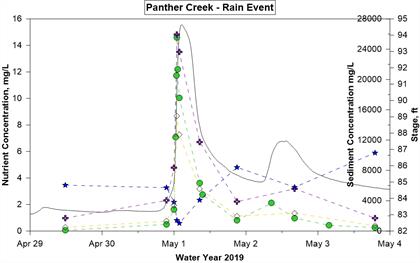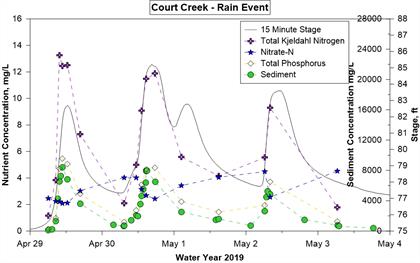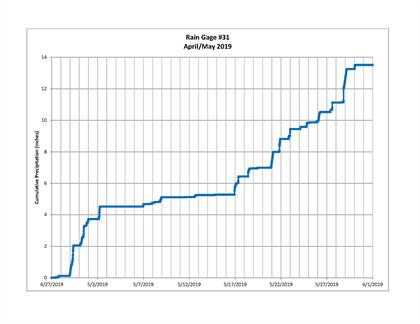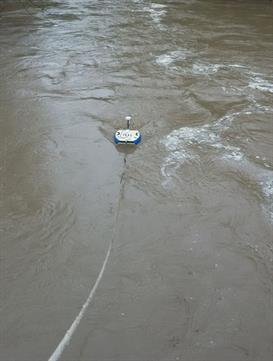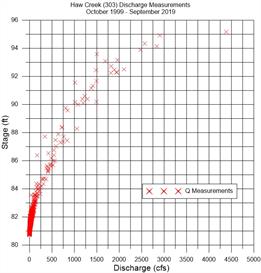Sediment and Nutrient Monitoring at Selected Watersheds within the Illinois River Watershed for Evaluating the Effectiveness of the Conservation Reserve Enhancement Program (CREP)
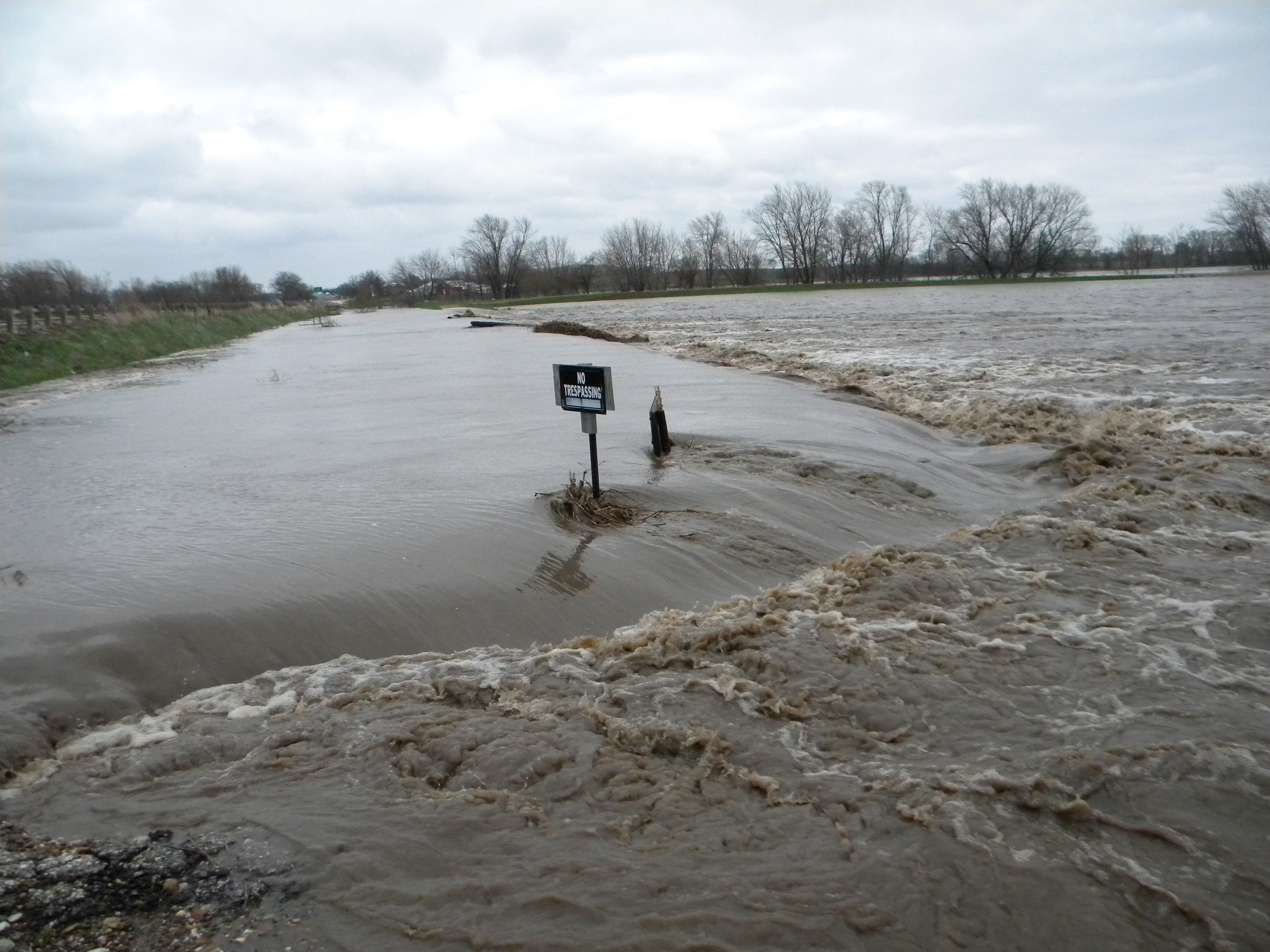
Principal Investigators
Laura Keefer, Erin Bauer, and Kip Stevenson
Project Staff
Sponsor
Illinois Department of Natural Resources
Project Period
1999–current
The Illinois State Water Survey (ISWS) is monitoring several small watersheds in Illinois to help the Illinois Department of Natural Resources evaluate the effectiveness of the Conservation Reserve Enhancement Program (CREP). The CREP goals aim to reduce the amount of sediment and nutrients entering the main stems of the Illinois and Kaskaskia Rivers. ISWS provides year-round sediment and nutrient yield monitoring of nine subwatersheds. Monitoring began in 1999 in five subwatersheds of the Illinois River Basin (IRB-CREP). In 2013, four subwatersheds in the Kaskaskia River Basin (Kaskaskia-CREP) were added. This webpage is an overview of the Illinois River Watershed aspect of the CREP monitoring project.
Illinois River-CREP Watershed Monitoring Area
The Illinois River-CREP stations are located in West Central Illinois. Two stations are in the Sangamon River watershed in Cass County within Jim Edgar Panther Creek State Fish and Wildlife Area. Three stations are in the Spoon River watershed in Knox County near Appleton, IL and Maquon, IL.
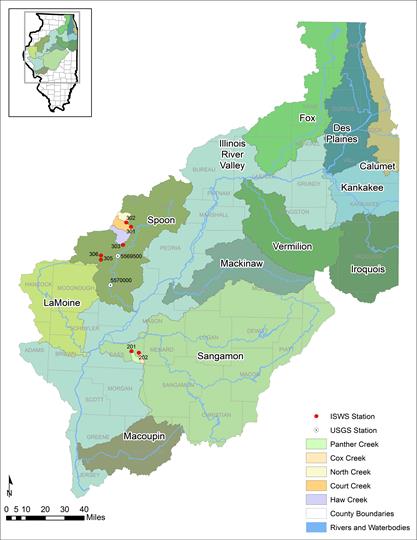
Illinois River Watershed
Monitored subwatersheds and station locations
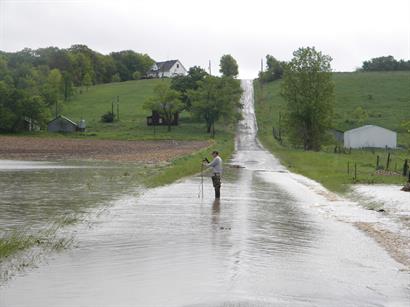
Discharge measurement over flooded road at North Creek.
Intensively Monitored Subwatersheds of the Illinois River Basin
| Station | Name | Drainage Area(sq. mi) |
|---|---|---|
| 201 | Panther Creek | 16.5 |
| 202 | Cox Creek | 12.0 |
| 301 | Court Creek | 66.4 |
| 302 | North Creek | 26.0 |
| 303 | Haw Creek | 55.2 |
Intensive monitoring includes collecting frequent water quality samples and discharge measurements which are used for calculating annual loads and creating watershed models. Each site is visited weekly and during storm events throughout the year to collect measurements and samples through seasonal and surface water stage variations.
Illinois River-CREP Site Images
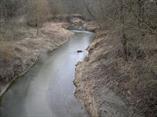
Panther Creek (201)
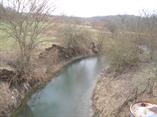
Cox Creek (202)
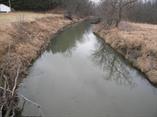
Court Creek (301)
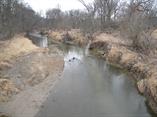
North Creek (302)
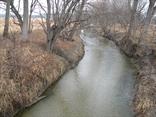
Haw Creek (303)
Stream Gauging and Auto Sampling Equipment
The monitoring stations are equipped with a datalogger, pressure transducer and storage module. A battery is required to operate the monitoring equipment (left photo), along with an automatic water pump sampler (right photo).
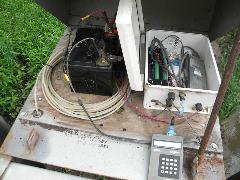
Monitoring equipment for collecting and storing data.
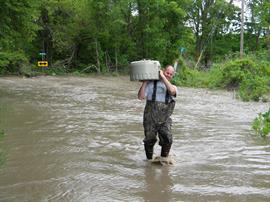
ISCO sample retrieval during flood event.
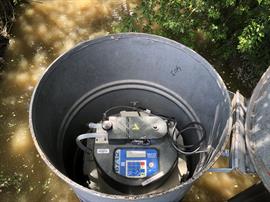
Automatic water pump for sample collection.
Water Quality Sampling
Baseflow nutrient and suspended sediment samples are collected weekly. Each station's datalogger is programmed to enable the automatic water pump to collect samples when the stream stage is above a predetermined elevation. During storm events, samples are collected more frequently and at specific points along the hydrograph. This allows for more samples to be collected during critical periods (rises, peaks, and falls) in the hydrograph as the stage (water-level) reacts to run off from precipitation in the study area.
The hydrographs and sample concentrations in the figures below depict the reaction of two different watersheds to a rain event in late April/early May 2019. Each watershed has unique characteristics that affect the timing of runoff, stream stage, and sediment and nutrient loads.
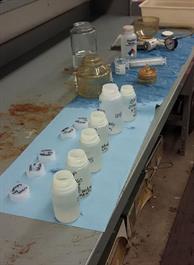
Nutrient Sample Preparation
In the plots above, many samples are collected when the stage is changing rapidly. When the stage is rising quickly most nutrient and sediment concentrations are highest. Notice that most concentrations are highest before the peak in each hydrograph, but conversely, nitrate concentrations are diluted as the stage increases. Each station has its own customized sampling parameters based on hydrographs recorded since 1999. These sampling parameters can be modified to collect the best distribution of samples and adjusted seasonally to account for changing baseline conditions.
Rainfall Data Collection
Pluvio raingages are equipped with a datalogger and solar panel. Several raingages are located in each watershed.
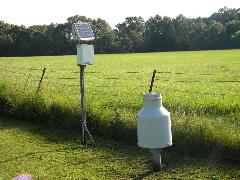
Pluvio raingage setup.
Monitored Nutrient Analytes and Sediment
| NITROGEN ANALYTES | PHOSPHORUS ANALYTES | SEDIMENT | ||||
| Total Kjeldahl Nitrogen | (TKN) | Orthophosphate | (oPO4-P) | Suspended Sediment Concentration | ||
| Nitrate as Nitrogen | (NO3-N) | Total Dissolved Phosphorus | (TP-Dis) | Suspended Sediment Particle Size | ||
| Ammonium as Nitrogen | (NH4-N) | Total Phosphorus | (TP) |
Nutrient samples analyzed by the ISWS Health and Environmental Applications Laboratory.
Sediment samples analyzed by the ISWS/ISGS Sediment Materials Laboratory.
Measuring Stream Discharge
The images below shows the different methods of collecting discharge measurements. Sontek M9 Acoustic Doppler Current Profiler (ADCP) is utilized for medium to high flow stream conditions. Sontek Flowtracker is used for low flow measurement when the stream is wadeable. The graph shows over 700 discharge measurements taken at different stages in the hydrograph at Haw Creek in the past 20 years.
Unpublished Annual Reporting
| Illinois CREP Annual Reports | Illinois River Watershed Monitoring Report Locations |
| 2021 Illinois CREP Report | n/a |
| 2020 Illinois CREP Report | n/a |
| 2019 Illinois CREP Report | n/a |
| 2018 Illinois CREP Report | n/a |
| 2017 Illinois CREP Report | Appendix B |
| 2016 Illinois CREP Report | Appendix B |
| 2015 Illinois CREP Report | Appendix C |
| 2014 Illinois CREP Report | Appendix C |
